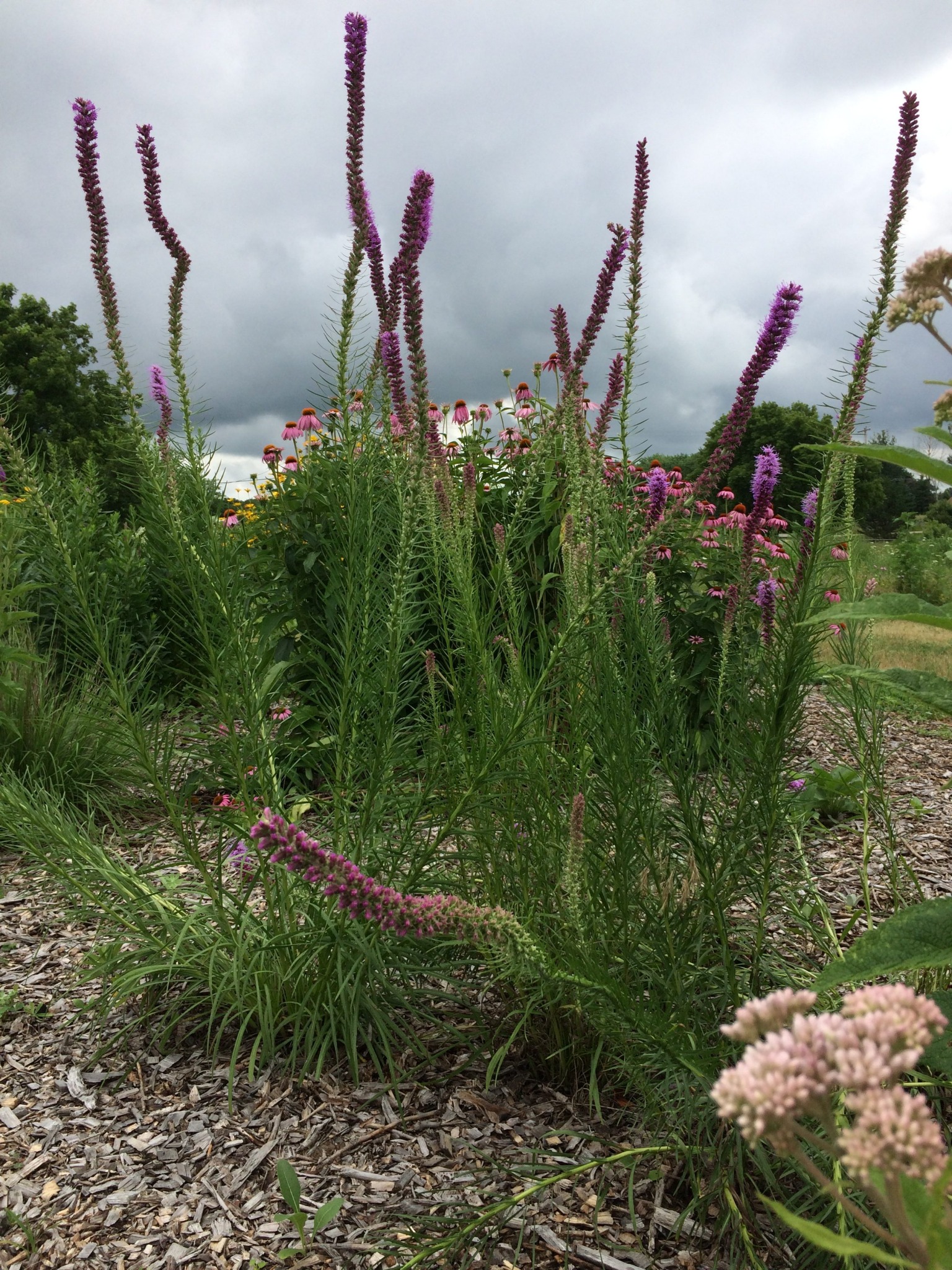Description
OUT OF STOCK
Tall, erect, purplish- pink spike in August-September
Tall, erect, purplish- pink spike in August-September
OUT OF STOCK
Tall, erect, purplish- pink spike in August-September
Cheerful yellow daisies all summer, non-stop.
Size: 2-3' x 2'
Care: Full sun well-drained to moist well-drained soil, drought tolerant
Native: Eastern Europe
This promiscuous flower sports maize colored daisies with ferny, aromatic foliage. The name Anthemis evolved from anthemon meaning “free flowering,” which describes the plant’s carefree, June through fall, blossoms. Philip Miller illustrated Marguerite in his 1750’s Dictionary. The flower was used to dye wool and to make tea.
The description in the Chiltern Seeds catalog cannot be improved: “This is the most elegant and refined of the North American prairie grasses …the finest texture composed of the thinnest of thin, thread-like, glossy green blades,.. in autumn turning deep orange before fading to a light copper for the winter. In late summer the plants bear, on very slender stalks high above the foliage, unbelievably delicate, graceful flower panicles, excellent for cutting. ”One of internationally known garden designer Piet Oudolf’s 100 “MUST HAVE” plants, Gardens Illustrated 94 (2013)
Size: 2’ x 2’
Care: Full sun in well-drained soil
Native: from Canada in the north to Texas in the south, Wisconsin native
Wildlife Value: seeds are food for birds
Awards: Missouri Botanic Garden Plant of Merit & Great Plants for Great Plains Grass of the Year.
Sporobolos is Greek from sporo meaning seed and ballein meaning to cast forth because the seed readily falls from the flower (or dropseed, the common name). Ojibwa “Medicine Society” used roots to cure sores & “remove bile.”
In May and June yellow petticoats peek out from under eye-popping red skirts flaring at the ends as these flowers dangle from tall stems.
Size: 24-36”x 12”
Care: part shade in moist well-drained soil - moist in spring & dry in summer
Native: Eastern Canada to Florida, west to New Mexico, Wisconsin native.
Wildlife Value: Provides rich, early spring nectar for bumblebees, bees, butterflies, and hummingbirds. Buntings and finches eat seeds. Sole food source for Columbine duskywing caterpillar.
Awards: England’s Royal Horticultural Society Award of Merit.
Seeds are fragrant when crushed, used by Omaha, Ponca and Pawnee as perfume. Pawnee used the plant as a love charm by rubbing pulverized seeds in palm of hand and endeavoring to shake hand of desired person. Crushed seeds also used to cure fever and headaches. Cherokee made a tea for heart trouble. The Iroquois used the plant to cure poisoning and to detect people who were bewitched. Grown by Tradescant the Elder in England in 1632. He may have received it from France. Cultivated by Washington & Jefferson. Grown at America’s 1st botanic garden, Elgin Botanic Garden 1811.
Umbels of arching stems with nodding bells of lilac shading to pink or occasionally white. May to June.
We are very sorry, but due to state agricultural restrictions, we are not permitted to ship Allium bulbs to Idaho, or to the following five counties in the State of Washington: Adams, Benton, Franklin, Grant and Klickitat.
Size: 12”-18”x 3-6”
Care: sun to part shade in moist well-drained soil
Native: Canada to Mexico
Wildlife Value: nectar source for Hairstreak butterfly, Attracts hummingbirds. Alliums resist critters including deer, rabbits, squirrels, mice, and moles and voles. They cannot stand the onion-like smell of Alliums protecting near-by plants too.
Cernuum is Latin meaning “nodding.” Many groups of 1st Americans ate the bulbs raw, roasted or dried for winter storage or as flavoring for soups and gravies. Cherokee used this plant medicinally to cure colds, hives, colic, “gravel & dropsy,” liver ailments, sore throats, “phthisic,” and feet in “nervous fever.” Those in the Isleta Pueblo were not quite as creative as the Cherokee and used this only for sore throats and infections. Meriwether Lewis collected this in Montana and wrote, “I met with great quantities of a small onion about the size of a musquit ball … They were crisp, white and well-flavoured. I gathered about a half a bushel of them before the crew arrivd.” Chicago is believed to be named for the Algonquin word for this plant chigagou.

